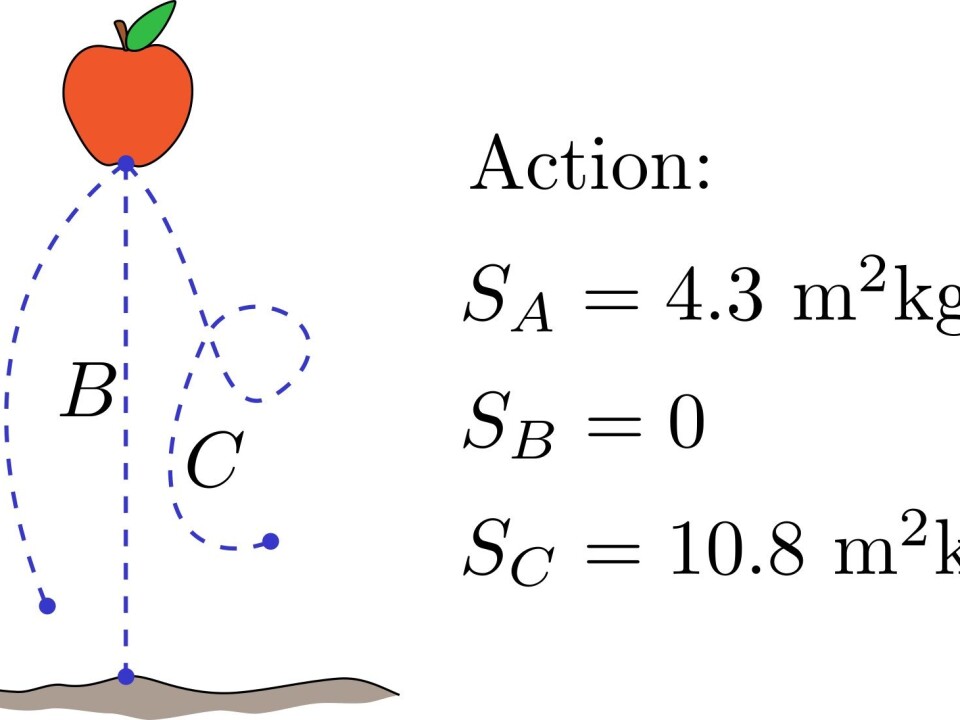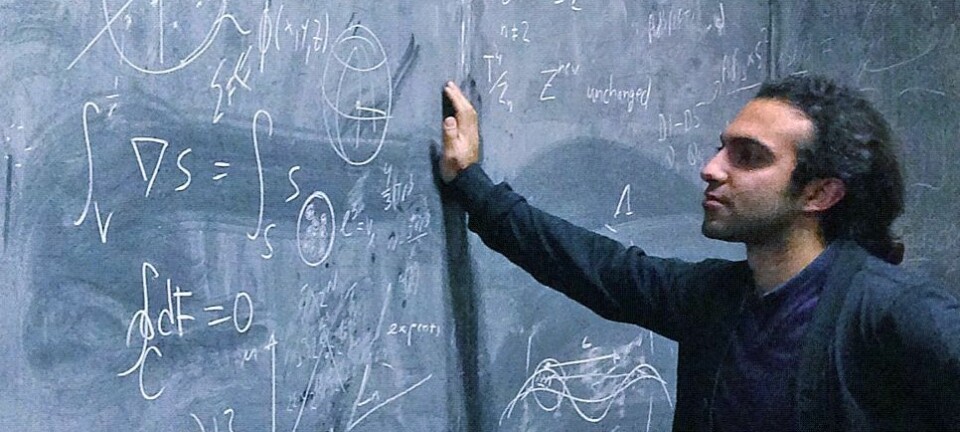
Gravity: it is all in your head
We take it for granted that gravity pulls things towards the Earth. But in reality this is just one of many explanations. And they are all equally made up.
Does gravity exist? If I ask anyone that question they would look at me curiously and reply: “Of course gravity exists!”
We cannot see it with the naked eye, but that doesn’t mean it doesn’t exist. After all, we see the effects of gravity.
It is the reason why things on Earth fall down while objects in space float around. So how can I postulate that gravity doesn’t exist?
Read More: Can large objects exist in a quantum state?
Newton invents gravity

Let’s go back in time, to when gravity was first discovered. It’s 1666 and Isaac Newton is sitting under an apple tree in Lincolnshire, England, his childhood home.
According to legend, he sees an apple fall from the tree and this gets him thinking. He asks himself, why does the apple fall down to Earth?
The Earth must attract the apple, he thinks. And that is why it falls down. He called this attraction, gravity.
All massive objects attracts each other by gravity, and this also allows Newton to explain the movement of the celestial bodies. Newton’s theory on gravity works extraordinarily well, so you may well think that, yes, gravity must exist.

But instead of saying that Newton “discovered” gravity, we should instead say that he “invented” it.
Read More: Cosmic neutrinos reveal the universe’s violent history
Disagreement in the orchard
Imagine Newton sitting in the orchard with a friend (rumour has it that he didn’t have many). Let’s call him Joseph-Louis Lagrange.
Lagrange actually lived 100 years after Newton, but that doesn’t matter for the purposes of our thought experiment. The important thing is that Lagrange takes a completely different approach to mechanics than Newton.
Both of them watch the apple fall. And Newton, who has just discovered gravity, decides to challenge his friend. With a sly smile he asks Lagrange to explain why the apple fell to the ground.
Newton waits in suspense to see whether Lagrange is clever enough to figure it out. After some time, Lagrange exclaims, “aha!”
“The apple falls because from an energy perspective, it follows a stable path,” says Lagrange with confidence.
“In the time it takes the apple to fall, it follows a direct path towards the Earth,” notes Lagrange. “But why does it follow a straight line? In the same period of time it could have followed any other imaginable path.”
Lagrange ascribes each possible path a quantity, which he calls “the action.” For any given path, one can compute its action by looking at the apple’s velocity and energy along that specific path.
Read More: Tiny gravitational changes indicate loss of glacial ice
Mathematically, the action is the kinetic energy (energy associated with movement) minus the potential energy (energy associated with position) integrated over the time it takes to complete the motion along path.
Lagrange postulates that among the many possible routes, the apple follows the path of least action. It’s is known as the principle of least action in physics. In the case of an apple falling to the ground, the straight line path that we observe is the one of least action.
This leaves Newton utterly confused as Lagrange talks about the apple’s energy, but does not name any type of attraction between the apple and the Earth.
But Lagrange does not need a force of attraction to describe the apple’s fall. As he sees it, gravity only exists in Newton’s head.
Newton cannot see anything wrong with Lagrange’s analysis but he is confident in his own abilities and convinced that gravity is the correct explanation.
Lagrange must be wrong and his ideas on energy are surely pure fantasy.
Read More: Gravitational-wave astronomy will change our understanding of the universe
More than one way to the same answer
Before Newton and Lagrange come to blows, another friend appears. He suggests a simple experiment to resolve the conflict. He will collect the apple and let it fall again. He asks both of them to predict the time it takes to fall using their preferred method.
“Thus,” he says, “we can reveal which of you gentlemen is correct.”
Both Newton and Lagrange grab a piece of paper and get to work. Their mutual friend asks them to show their predictions, and to their astonishment they both proclaim at the same time: “Half a second!”
The two methods give the same answer and the experiment doesn’t clear the matter up.
Read More: New satellite will test Einstein’s theory
Different explanations can be equally good
For the rest of the day, the three friends try to design an experiment that will reveal whether Newton’s gravity or Lagrange’s energy is the true explanation.
But time and time again, both methods give the same answer. By the evening they give up—a sensible choice as there is no experiment that can tell the difference between the two methods. They are completely equivalent.
They conclude that both methods are both right and wrong. If Newton prefers to think about the apple’s fall as a consequence of gravity, then that is a valid model.
As Lagrange suggests, it is nothing more than a model, a “computational trick” if you will, just like his own method.
They both agree on all of the physical parameters measured, such as time of fall, speed, and so on. Where they differ is the model used to explain it—the mathematical apparatus they use to reach their identical predictions.
There are numerous mathematical formalisms that describe the same physics. The packaging is different but they are equal as physical theories. They always give the same measurable results.
The physicist Richard Feynman thought that every theoretical physicist should familiarise themselves with six or seven formalisms for the same physical phenomenon. The smart physicist chooses the one that is easiest to work with or that gives the most insight into the problem.
Read More: Dark matter: how can we know if it exists?
Physics classes could have been very different
In daily conversations, the idea of gravity emerged as the winner. This is probably due to the passage of history, but also because it appears simple or more intuitive. But it didn’t have to be this way.
Had Newton never been born, we could all have grown up learning about Lagrange’s principle of least action, or perhaps something else entirely.
It is fascinating to think that all of our language used in physics could have turned out very differently.
If we one day meet aliens from another world, we will agree how an apple falls from a tree. But we probably won’t agree why.
---------------
Read this article in Danish at ForskerZonen, part of Videnskab.dk
Translated by: Catherine Jex








